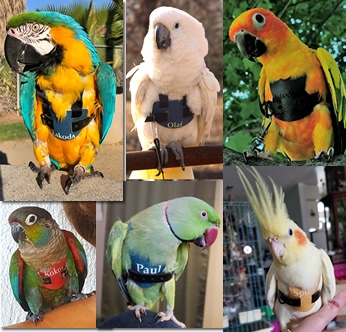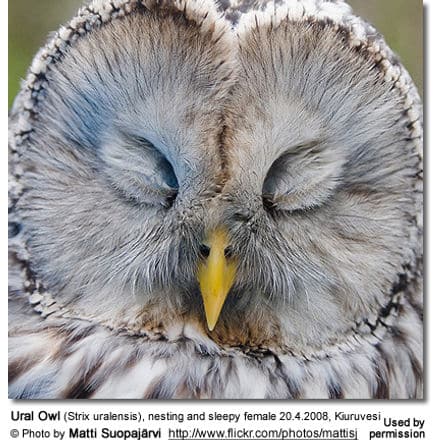Bridled Terns (Onychoprion anaethetus)
The Bridled Terns (Onychoprion anaethetus, formerly Sterna anaethetus – see Bridge et al., 2005) is a seabird of the tern family Sternidae.

Distribution / Range
It is a bird of the tropical oceans.
The Atlantic subspecies melanopters breeds in Mexico, the Caribbean, and West Africa; other races occur around Arabia and in Southeast Asia and Australasia, but the exact number of valid subspecies is disputed.
This bird is migratory and dispersive, wintering more widely through the tropical oceans. It has markedly marine habits compared to most terns. This species is a rare vagrant to western Europe.
Breeding / Nesting
This species breeds in colonies on rocky islands. It nests in a ground scrape or hole and lays one egg.

Diet / Feeding
It feeds by plunge-diving for fish in marine environments, but will also pick from the surface like the Black Tern and the Gull-billed Tern. It usually dives directly, and not from the “stepped hover” favoured by the Arctic Tern.
The offering of fish by the male to the female is part of the courtship display.
Description
This is a medium-sized tern, at 30–32 cm in length and with a 77–81 cm wingspan similar to the Common Tern in size, but more heavily built.
The wings and deeply forked tail are long, and it has dark grey upperparts and white underparts. The forehead and eyebrows are white, as is a striking collar on the hindneck. It has black legs and a bill.
Juvenile Bridled Terns are scaly grey above and pale below.
This species is unlikely to be confused with any tern apart from the similarly dark-backed Sooty Tern and the Grey-backed Tern from the Tropical Pacific. It is paler-backed than that Sooty, (but not as pale as the Grey-backed) and has a narrower white forehead and a pale neck collar.

References
- BirdLife International (2004). Sterna anaethetus. 2006. IUCN Red List of Threatened Species. IUCN 2006. Retrieved on 9 May 2006. Database entry includes justification for why this species is of least concern
- Bridge, E. S.; Jones, A. W. and Baker, A. J. (2005): A phylogenetic framework for the terns (Sternini) inferred from mtDNA sequences: implications for taxonomy and plumage evolution. Molecular Phylogenetics and Evolution 35: 459–469.
- Bull, John L.; Farrand, John Jr.; Rayfield, Susan and National Audubon Society (1977): The Audubon Society field guide to North American birds, Eastern Region. Alfred A. Knopf, New York. ISBN 0-394-41405-5
- Collinson, M. (2006). Splitting headaches? Recent taxonomic changes affecting the British and Western Palaearctic lists. British Birds 99(6): 306-323.
Olsen, Klaus Malling and Larsson, Hans (1995): Terns of Europe and North America. Christopher Helm, London. ISBN 0-7136-4056-1

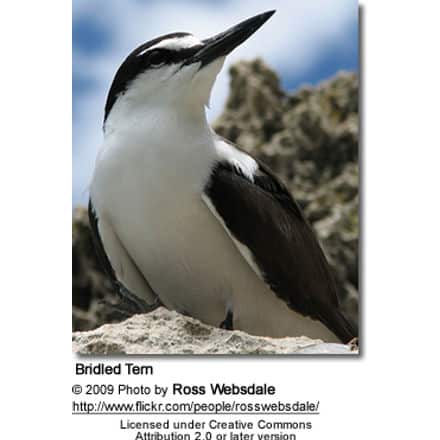
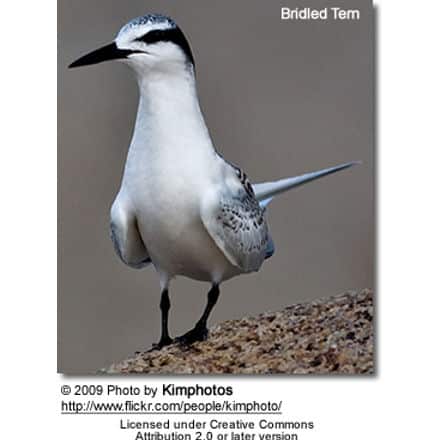
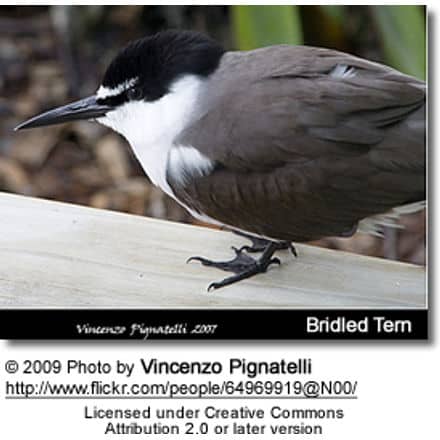
 Olsen, Klaus Malling and Larsson, Hans (1995): Terns of Europe and North America. Christopher Helm, London. ISBN 0-7136-4056-1
Olsen, Klaus Malling and Larsson, Hans (1995): Terns of Europe and North America. Christopher Helm, London. ISBN 0-7136-4056-1

